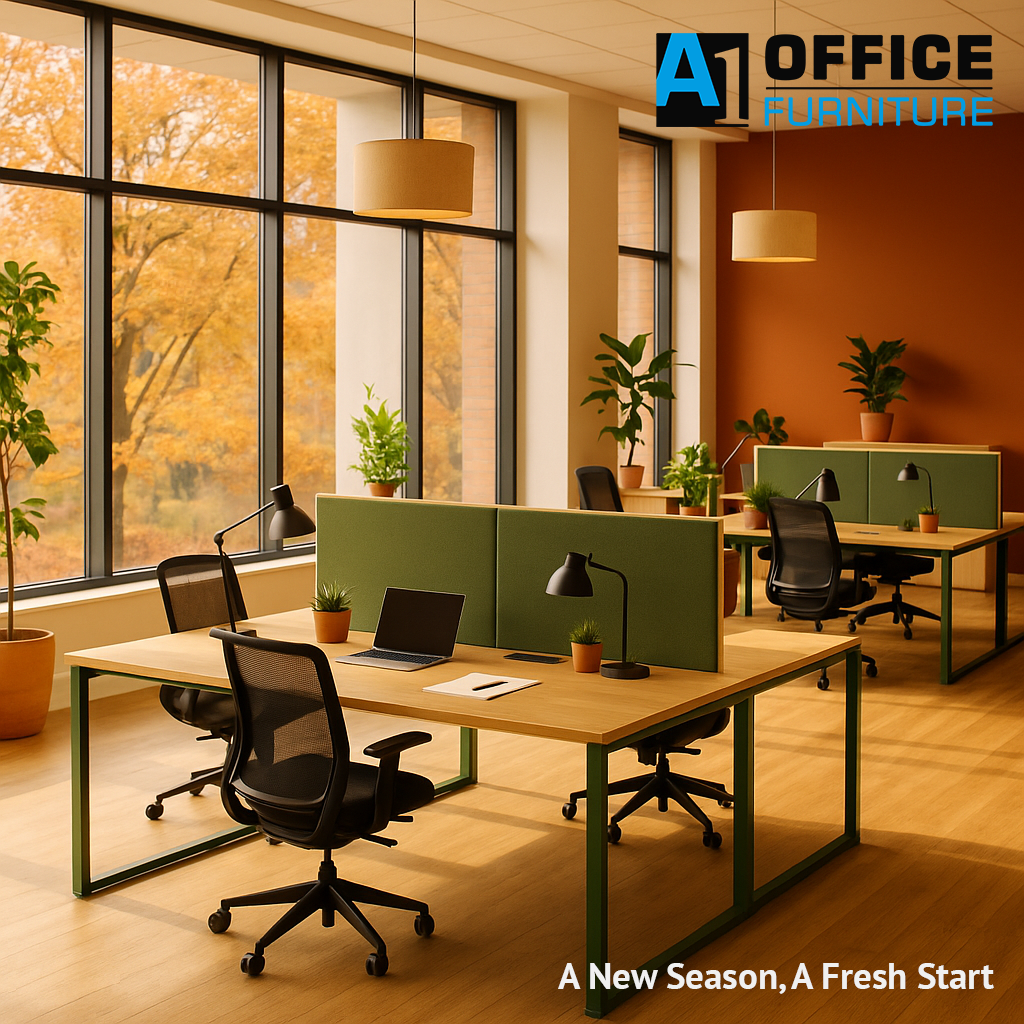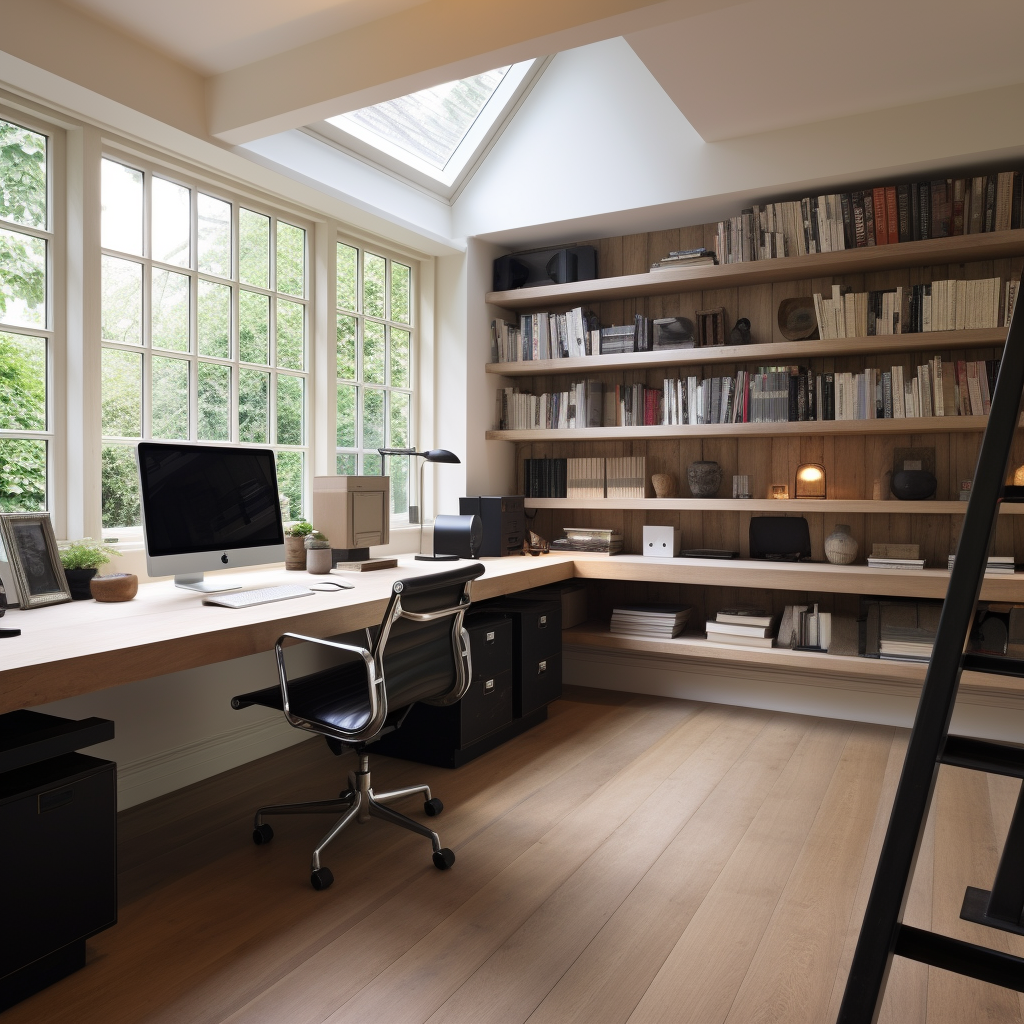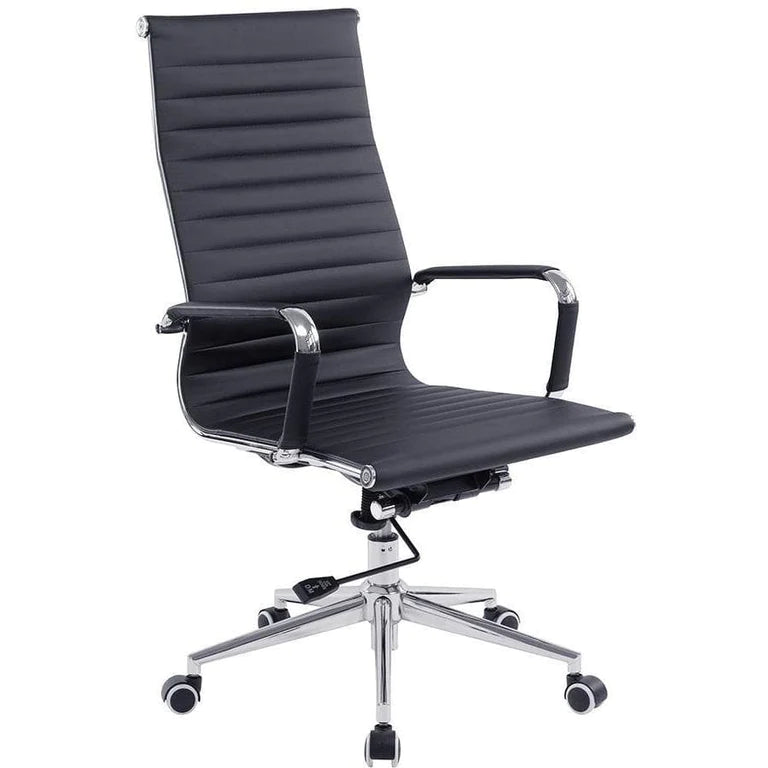
Curved vs Straight (Rectangular) – which office desk is best for you?

Choosing a suitable desk is more important than you might think.
Whether you're buying a single desk for your home office, or a whole slew of desks to fill your office space, there's a lot to think about. Choosing the right desk can have a massive influence on your health, productivity, and even mood.When choosing a new office desk, one of the main things to consider is whether a curved desk is more suitable than a traditional straight desk. Of course, there's no right or wrong answer, and there's probably more to think about than you first thought.
Keep reading, and we'll try to walk you through some of the most challenging considerations and help you make the right choice for you.
Which desk shape is better for you - curved or straight?
The nature of your work, the space you have available, your budget and your personal preference will all place a part in determining whether a straight desk or a curved desk is suitable for you. Each has its pros and cons.
Available Space

Before deciding on a desk, the first consideration should be the available space in your office or room. Evaluate the layout of the room, taking into account doors, windows, and other furniture. The size and shape of your desk should fit comfortably within this space. For instance, if you have a large, spacious office, you could opt for a larger curved desk, which provides more workspace and better uses the room's size. However, if your workspace is more confined, a straight desk might be a better fit as it can comfortably sit against a wall or in a corner without overwhelming the space.
Ergonomic Needs

Considering ergonomic needs is fundamental for maintaining comfort and reducing the risk of strain or injury during long hours of work. A curved desk provides a natural reach zone, where everything you need is within arm's reach. This ergonomic benefit reduces unnecessary twisting and turning, which can help maintain a correct posture and reduce physical discomfort. However, you can also create an ergonomic setup with a straight desk using monitor stands, keyboard trays, or an adjustable chair, depending on your individual requirements.
Aesthetics
Your desk isn't just a functional piece of furniture; it also contributes to the overall aesthetics of your workspace. The visual appeal of your desk should reflect your personal style and blend seamlessly with your office decor. Curved desks often offer a modern, sleek appeal that can make a statement in your workspace. In contrast, straight desks can easily blend with various decor styles and maintain a classic, timeless appeal. Both can be found in a variety of materials and finishes, so choose a design that resonates with your aesthetic preferences.
Your Workflow

Understanding your workflow is crucial when selecting a desk. Think about the nature of your work, the tools you use daily, and how you like to organize your workspace. If your work involves using multiple monitors, drafting large documents, or spreading out numerous resources, a larger, curved desk can provide more surface area to accommodate these needs. On the other hand, if your work mainly involves a laptop and not much else, a straight desk may provide ample space without any wasted areas.
Storage Capacity
A desk with good storage capacity can help keep your workspace organized, providing areas for your supplies, files, and technology. Many curved desks come with integrated storage solutions like shelves or drawers due to their larger design. However, a straight desk can also offer storage options, and additional filing cabinets or shelves can always be added to your office setup. Consider the amount and type of storage you need based on the supplies and equipment you use regularly.
Budget
Finally, your budget plays a key role in the decision-making process. The cost of desks can vary greatly based on their design, size, material, and brand. Generally, curved desks are more expensive due to their complex construction and larger size. Straight desks, on the other hand, tend to be more affordable and offer a wide range of options across various price points. Set a budget that aligns with your financial constraints, but remember, a desk is a long-term investment, so quality and comfort should not be compromised.
By taking each of these factors into account, you can make a well-informed decision that aligns with your needs, preferences, and constraints, ensuring that your new desk serves as a productive and comfortable workspace.
Straight Desk vs Curved desk comparison.
The best way to understand the difference between a straight and a curved desk is to look at real-world comparisons.
Straight Desks
Straight desks, as their name suggests, have a flat, linear design. This traditional desk style offers a simple, clean, and functional workspace.
Benefits:
-
Versatility: Straight desks come in various sizes and designs to fit any room size or layout. Whether you need a compact desk for a small room or a larger one for extensive work, there's a straight desk to meet your needs.
-
Customization: Many straight desks offer customizable features like adjustable heights or modular components that allow you to create a workspace that suits your specific needs.
-
Easy to Place: Due to their straightforward design, straight desks are easy to place against a wall, in a corner, or even in the middle of a room.
-
Cost-Effective: Straight desks generally come at a lower price point due to their simple design and construction. They can be an excellent option if you're working with a tight budget.
-
Easier to Move: Given their shape and structure, straight desks are generally lighter and easier to transport. If you often rearrange your office or plan on moving, a straight desk might be more practical
Drawbacks:
-
Limited Space: While they can be sizeable, straight desks offer only linear workspace. If you're someone who likes to spread out their work, a straight desk might feel restricting.
-
Lack of Ergonomics: A straight desk might lead to more movement and reaching due to the linear layout, which could result in discomfort during long work hours.
-
Less Aesthetic Appeal: While this can depend on individual taste, straight desks generally lack the unique design appeal that curved desks offer. They might not be the best choice if you're aiming for a standout visual effect in your workspace.
-
Limited Personal Space: Because straight desks are linear, they provide less personal space when used in shared office setups, which can be a disadvantage in terms of privacy.
Curved Desks
Curved desks, often known as L-shaped or U-shaped desks, are designed with an ergonomic curve or angle. This design can offer a more dynamic workspace.
Benefits:
-
Ergonomics: The primary advantage of a curved desk is its ergonomic design. The curve allows for a more accessible workspace where everything is within arm's reach, which can help reduce unnecessary movements and improve comfort.
-
Space Utilization: Curved desks can effectively utilize corner space, providing you with a larger workspace while maintaining a compact footprint. This is especially beneficial in smaller rooms or offices.
-
Aesthetic Appeal: Curved desks often have a modern, sleek design, adding an aesthetic touch to your workspace.
-
Integrated Storage: Many curved desks come with integrated storage options like drawers or shelves because of their larger size. This can help keep your workspace tidy and organized.
-
Distinct Working Areas: The shape of curved desks allows for the easy delineation of different working zones. For instance, you could have your computer in one section and paperwork or crafting materials in another.
-
Better for Meetings: If you often have in-person meetings at your desk, a curved desk can create a more inclusive and engaging space for conversation.
Drawbacks:
-
Limited Placement: Due to their shape, curved desks typically require more thought in placement. They are best suited for corners or central room locations and may not fit well against a flat wall.
-
Less Versatility: Curved desks may not be as customizable as straight desks due to their shape. Modifying or expanding them can be a bit more challenging.
-
Higher Cost: Curved desks are generally more expensive due to their complex design and construction.
-
Harder to Move: Given their size and shape, curved desks can be bulkier and more challenging to transport. They may not be the best option if you're likely to move or rearrange your workspace frequently.
-
More Difficult to Assemble: Assembling a curved desk can be a more complicated process compared to a straight desk due to the complexity of its design and structure.

Conclusion: Straight Desk or Curved Desk?
Choosing between a straight desk and a curved desk ultimately depends on your specific needs and preferences. If you value versatility, customization, and easy placement, a straight desk might be the ideal choice. However, if ergonomics, space utilization, and modern design are high on your priority list, a curved desk could be a more suitable option.
Consider the available space in your office, your work habits, ergonomic needs, and the overall aesthetics you want to achieve. Both straight and curved desks have their unique merits, and understanding these will lead you to the desk that best enhances your productivity and comfort. Happy desk hunting!
(click on boxes below to browse our curved and straight desks)









